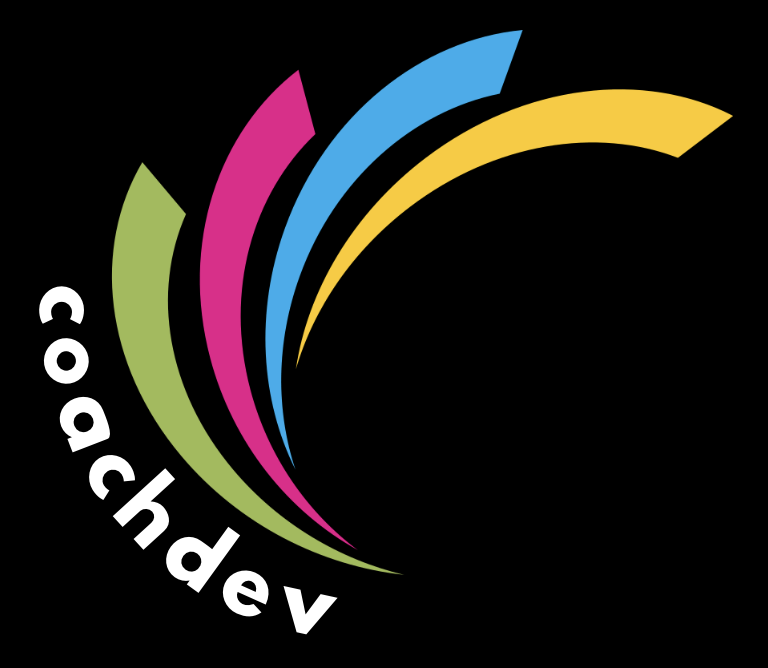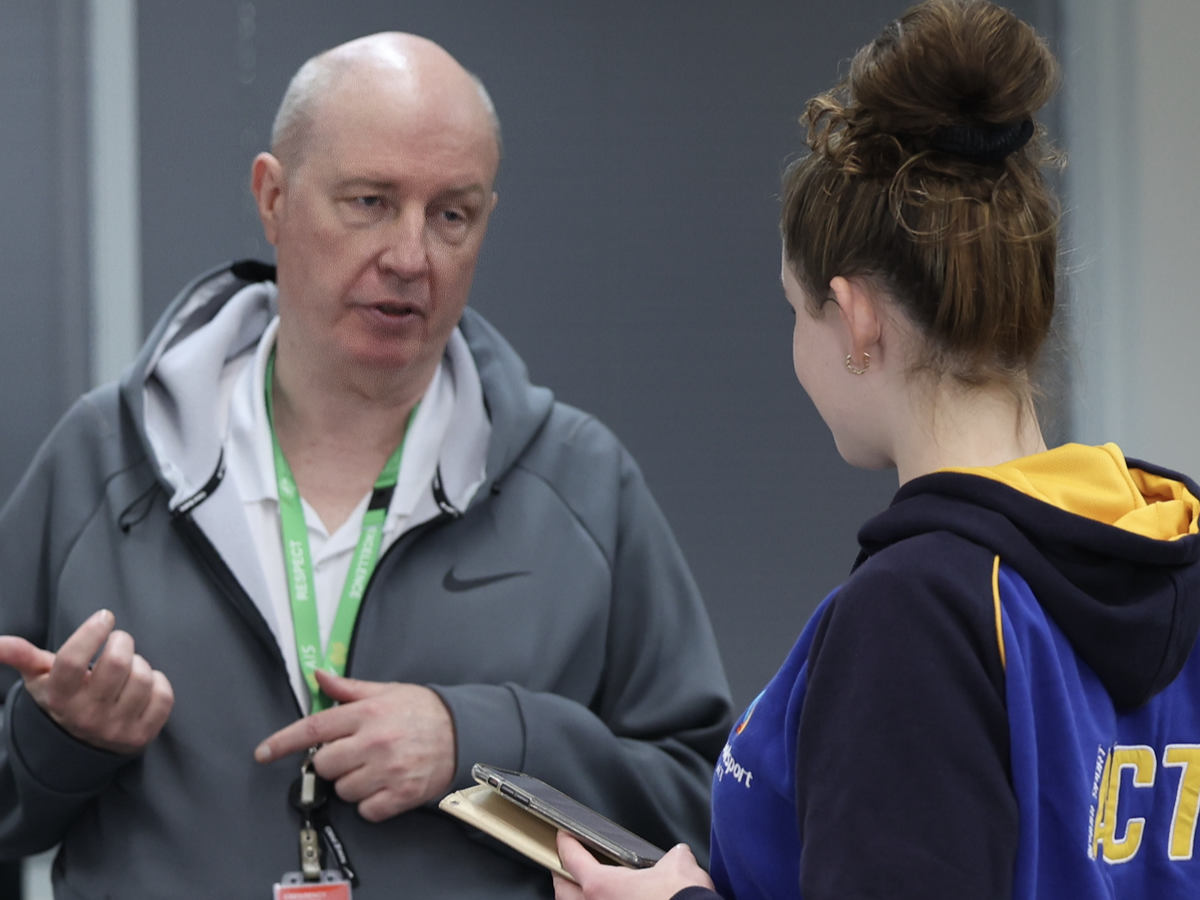The push – pull continuum
A pillar of many coach developer courses is the PUSH – PULL continuum – a way of characterising a range of different teaching approaches1. A similar idea is the TELL – ASK continuum. An Australian Sports Commission video 2 about the TELL – ASK continuum can be accessed HERE.

Pushing or telling is characterised as a traditional information-driven approach where the teacher curates, translates and communicates information (3). The responsibility for learning resides with the learner (athlete or coach).
In a learner-centred approach, learner and teacher work together. The teacher engineers an environment to promote learning. The emphasis is squarely on learning. High-level questions help to make thinking visible and make sense of learning. They help the learner to connect to prior knowledge and cluster new knowledge into larger concepts. Student explanations provide a similar role.
An additional potential advantage to the push-pull approach is that it reminds the CD or coach that they will need to adapt their teaching to the context and the needs of the learners.
Push – Pull Limitations
The push-pull or tell-ask concepts are useful provided it is understood that there is no right or wrong teaching approach that can be explained by the idea of a push-pull continuum. It is also important to not see push-pull as binaries. They are simply teaching approaches to be used in a flexible way along with other teaching strategies.
• Pushing or telling are imprecise terms often confused with the idea of someone talking for 40 minutes or more while the audience remains passive – possibly asleep (didactic lecturing). A didactic approach is not the same as explicit or direct teaching.
• Explicit (or direct) teaching includes some telling but in the context of setting clear learning intentions, indicating what ‘good looks like’, modelling, checking for understanding, guiding the practice and so on.
• The push-pull continuum is a useful reminder that different learning situations require solutions that are relevant to the moment. However, push-pull is not a precise guide for telling you when to push or pull. For example, it is not useful to say that pushing should never be used with an expert learner or an exploratory learning strategy or questioning approach should never be used with a novice learner.
• Push-pull is also not a useful tool for categorising different teaching roles such as instructor, teacher, facilitator, mentor etc. What these titles mean is arbitrary and imprecise and assumes that the roles can be accurately placed on the push-pull continuum. They can’t.
Addressing the limitations
Push – Pull shows us that there are different ways a coach or CD can offer guidance to a learner. The type of guidance offered depends on the context and the learner. The push – pull continuum is limited in informing us of the choices available for guidance. It is difficult to match a point on the push – pull continuum with a learner’s needs and use that to prescribe how much pushing, pulling or something else should be done.
In an earlier post, we looked at the Gradual Release of Responsibility model (GRR) – (ref 4) summarised by the graphic below. The graphic conveys the multiple ways a teacher and learner can work together. Guidance fades from top to bottom. GRR is not meant to convey a linear process – the amount of guidance may fluctuate depending on the circumstance.

A complementary approach to managing instructional guidance is to base the guidance on the following three factors shown in the graphic and explained below. The three factors help in the choice of the optimal guidance for different contexts.

• The TASK. Is the focus on surface knowledge such as knowing the three energy systems or knowing what emotional intelligence means? Or is it about the deep knowledge that is required to apply knowledge and skills and solve problems.
• The LEVEL of LEARNER EXPERTISE. What prior knowledge and skills does the learner possess?
• The INSTRUCTIONAL GOAL. This is an important factor in deciding whether there should be no guidance or minimal guidance versus a high level of guidance as in explicit instruction. Two instructional goals have been identified:
o Pre-instructional goals. Priming the learner for what is to come. Activating prior learning. Identifying knowledge gaps. Motivating the learner.
o Problem solving. For this goal, the aim is to enhance problem solving skills so the learner can apply knowledge and transfer it to new and unfamiliar situations. This requires the acquisition of more comprehensive mental models.
Slava Kalyuga (5) has developed the idea of these three factors as a basis for managing instructional guidance in an article in an open access book, In Their Own Words. The e-book is available here and is highly recommended. See page 122 for Slava’s informative article.
Whether instructor, teacher, or mentor, these three factors come into play. A word of caution though. Coaching is complex with many ‘moving parts’. Any prescriptive advice should be tempered with the coach’s (or CD’s) own judgement. This may mean doing something that doesn’t neatly fit a ‘textbook prescription’.
Take outs
• The Push – Pull continuum is shorthand for indicating there are different ways to offer guidance to learners.
• Implicit in the idea is that more pulling or asking is better because it is consistent with the idea of a more learner-centred approach to teaching.
• Use push – pull as a reminder to employ a variety of teaching/coaching approaches.
• Avoid black and white binary labelling. Pushing or telling can mean many things and can serve many useful purposes. At the wrong time or if overused, pushing can be counterproductive. Pulling or asking, likewise comes in many forms. There are pros and cons for this strategy too.
• Rather than putting teachers and learners into categories, understanding how to best manage guidance is a more productive approach.
• More and more emphasis in coaching and coach development is being placed on learner-centred approaches. More asking. More learner-voice. Opportunities for more learner choice when working with learners (coaches or athletes). These are aimed at producing greater learner independence and autonomy.
• There is no right way to teach or coach. What works in the researcher’s laboratory might not work in your ‘laboratory’ of the real world. This calls for understanding and empathy for different points of view and teaching/coaching styles. This idea is developed in an excellent podcast on The Sport Pysch Show (6).
• Avoid putting labels on teachers/coaches and learners or putting them on a continuum. A more useful approach starts with the learner’s needs and asking the following questions:
o What is the learning intention and what does ‘good’ look like?
o Is the learner a novice or an expert on the task at hand? What is their prior achievement?
o What is the nature of the task? (Task complexity – high or low or in between)
o What is the instructional goal – to prime and motivate prior to deeper learning or is it to develop problem solving skills?
Asking these questions is a reminder that CDs and coaches may play multiple roles ranging from providing explicit instruction, to being a mentor or supportive friend.
Context as always is important. Remember, it too can vary.
The coach or CD’s ‘override’ button is to be used when gut feeling indicates the learner may need something that fits the moment better than a more prescriptive approach.
Editors: Lawrie Woodman, Andrea Woodburn and Melanie Schembri-Waite.
References
- Crisfield, P., Bales, J. (2024). International Coach Developer Framework, International Council for Coaching Excellence. Page 42.
- Australian Sports Commission. Supporting Others Video Series.
- Chew, S., (2023). The Culture of Teaching We Have Versus the Culture of Teaching We Need. In In Their Own Words (What Scholars and Teachers Want You to Know About Why and How to Apply the Science of Learning in Your Academic Setting. Division 2, American Psychological Association. Page 32.
- Fisher, D. Effective Use of the Gradual Release of Responsibility Model.
- Kalyuga, Slava. (2023). Task Complexity, Learner Expertise, and Instructional Goals in Managing Instructional Guidance. In In Their Own Words. Page 122-131. (See reference #3 above for access).
- Cushion, C., Harvey, S. Cope, E. Sport Psych Show, Episode #227. (2023). A Flexible Approach to Coaching. Highly recommended for its common sense to approach to how learning works and its relevance to coaching.

